EVA Air Bans Power Banks on flights starting this Saturday, leaving many travelers wondering how to keep their devices charged. I’ve always relied on my power bank for long journeys, but with this new rule, planning ahead is more important than ever.
If you’re admire me, your first reaction might be, Wait, what? How am I supposed to survive a long journey without my trusty backup? Don’t panic. I’ve got you covered. I’ll walk you through everything you need to know—clearly, without fluff, and with some tips that have personally saved me from panic.
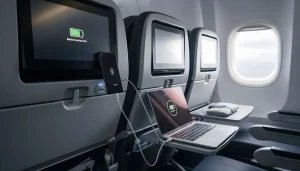
Here’s what this guide covers:
- Why EVA Air Power Banks Bans restricting portable charger use
- How the new rules affect what you can pack
- Alternative ways to keep Widgets alive on board
- How other are handling similar restrictions
- My personal take on whether this change is helpful or just another hassle
- Extra preparation tips for stress-free tour
Why is EVA Air Power Banks chargers?
According to them, this is purely a safety measure. Most chargers contain lithium-ion batteries, which, under rare circumstances, can overheat or short-circuit. While incidents are uncommon, even one spark thousands of feet above the ground is a serious hazard.
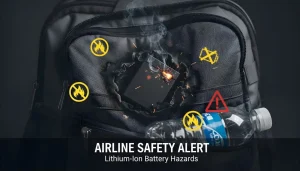
South Korea recently implemented a similar rule after an Air Busan plane experienced a fire on board. The exact cause was never confirmed, but the event prompted across the region to tighten regulations. EVA seems to be taking the “better safe than sorry” approach.
I won’t lie it stings a bit. I’ve grown dependent on my small backup for those long-haul journey where every percentage of Charge counts. But the rationale is clear: a dead phone is frustrating, yes, but a potential in emergency? Far worse.
What does this mean for your packing?
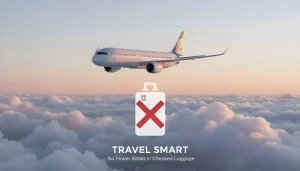
Here’s the quick breakdown:
- You can bring a Handheld charger. It just has to stay in your carry-on. Checked luggage is off-limits.
- You cannot use it during the takeoffs. Think of it as a companion who has to sit quietly until the plane lands.
So yes, your travel buddy comes along for the ride. You just won’t be able to whip it out mid to rescue a dying Equipment
It’s a small adjustment in behavior, but it requires some planning. I’ve had to rethink that my Gadgets last long enough without relying solely on external batteries.
How do you keep your gadgets alive without a portable charger?
This was my biggest concern. A long journey without a backup Stack sounds nightmare. My phone usually drains faster than my patience when the Wi-Fi hiccups Luckily, there are several strategies to stay powered.

- Charge everything before you leave home
This sounds obvious, but many of us forget it. I’ve shown up at the Flight terminal with half-dead Devices more than once because I assumed I could just top up on the plane. That excuse is gone. I now make it a rule to charge my phone, tablet, earbuds, and smartwatch the night before. Consider it a full meal for your Devices—they’ll last much longer mid-journey.
- Take advantage of in-seat outlets
Most operators provide AC outlets and USB ports at each seat. They aren’t lightning-fast like wall chargers at home, but they’re perfectly capable of keeping your phone, tablet, or laptop alive for hours. Pro tip: bring the right cable. I’ve watched fellow passengers scramble at 30,000 feet because they forgot theirs. Don’t be that person.
- Manage battery settings wisely
Switch to power-saving mode, dim your screen, and close apps running in the background. Yes, it may mean putting TikTok or social media scrolling on hold, but your Electronics will last significantly longer. Think of it as giving your gadgets a gentle spa break—they need it just as much as you do after terminal security lines.
- Download content in advance
Streaming while flying can drain a Charge faster than you expect. I make it a habit to download movies, playlists, podcasts, or e-books before leaving home. Offline entertainment keeps you busy without turning your Electronics into a hot potato.
- Use your gadgets strategically
Let’s face it: we rely on our Electronics far too much. This restriction is a chance to disconnect temporarily. I sometimes read a physical book, jot down notes, or simply gaze out the window. It’s surprisingly calming. And yes, it preserves battery life.
- Use a laptop as backup
Some laptops can charge phones via USB-C even when unplugged. It’s not as convenient as a p Handheld charger, but it’s a lifesaver in emergencies. I’ve used this trick more than once when my tablet threatened to die mid-flight.
- Invest in battery-efficient accessories
Certain headphones, e-readers, and tablets consume less energy than others. If you travel frequently, it’s worth considering gear that keeps your electronics running longer. Small adjustments like these can save frustration when outlets are limited.
Are other airlines doing the same?

Yes, EVA is part of a growing trend.
- South Korean carriers like Air Busan have already banned in-flight use of Lightweight chargers.
- China Also allows passengers to bring chargers but advises against using them mid- travel
- Mandarin follows a similar rule.
- Starlux has enforced this restriction since its first flight in 2018.
If you’re flying in Asia or internationally it’s smart to assume in-flight charging may be restricted, and plan accordingly.
My personal take on EVA Air Bans Power Banks
I’ll admit, when I first heard the news, I groaned. As a frequent traveler, a portable charger feels like a safety net. That small device often saves my phone at 5% with hours of flying left. Losing it feels like losing a teammate mid-game.
But after thinking it through, I understand the logic. Lithium batteries are unpredictable. Even a minor spark in a cabin at cruising altitude could be catastrophic. Safety must come first, even if it slightly inconveniences us.
Do I miss the convenience? Absolutely. I’ve relied on my portable charger as much as coffee on early mornings. But the ban has pushed me to plan better: charging Widgets ahead of time, carrying the right cables, and using in-seat outlets strategically.
Interestingly, it’s also made me reflect on my dependence on gadgets. A dead phone isn’t the end of the world. Reading, writing, or simply observing the view outside can be surprisingly satisfying. Sometimes, this forced break from screens is refreshing.
Still, I won’t pretend I like it. Portable chargers gave freedom. I’ll always consider them essential travel gear. But rules are rules, and adapting is part of the journey.
Quick tips before you fly with
Going for a trip without a Lightweight charger doesn’t mean chaos—it just calls for better preparation. Here’s my pre-flight routine that keeps Appliances functional and stress minimal:
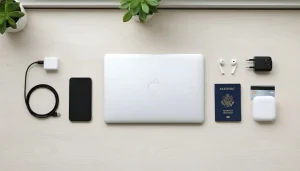
- Fully charge everything
Phone, laptop, smartwatch, earbuds—if it has a battery, I charge it the night before. Think of it as giving your Widgets a full meal—they’ll last longer while you travel. - Bring multiple cable
USB-C, Lightning, even micro-USB if necessary. Forgetting your cord mid-flight is one of those small regrets that feel huge when you’re 35,000 feet up. - Use a multi-port adapter
Outlets are limited. A small adapter lets you charge several Equipment at once. Perfect for solo adventure and lifesaving if you’re flying with friends. - Download entertainment in advance
Offline content is king. Movies, music, and podcasts save battery life and prevent Wi-Fi-induced frustration. - Switch devices to battery-saving modes
low power settings, and disabling Bluetooth where unnecessary can add hours to your Appliances life. It’s a small tweak that pays off big time. - Carry a laptop for backup
USB-C charging from laptops is slower than Movable chargers, but in emergencies, it’s better than nothing. - Prepare offline work
Emails, spreadsheets, and notes can often be set to work offline. That way, even spotty Wi-Fi doesn’t disrupt productivity. - Check updates
Flight operators can revise safety rules unexpectedly. Reviewing policies on their website before flying avoids last-minute surprises. - Pack extra patience
going-out without your usual backup can be a minor inconvenience. I treat it as an opportunity to slow down, disconnect, and enjoy the journey. - Bring a compact power-efficient gadget
If you rely heavily on Appliances, consider a lightweight tablet or phone with longer battery life for adventure.
Final thoughts
EVA restriction on use of portable chargers is a significant change for tour Comparable to me. For those of us who rely on backup Appliances, it initially feels inconvenient. But when you consider the safety angle, it’s hard to argue against it.
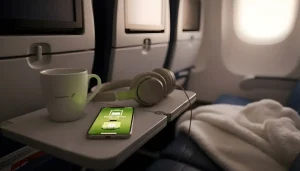
It’s being told you can bring snacks onboard but can’t eat them—frustrating, yet manageable. With outlets at each seat and proper preparation, it’s entirely possible to keep device functional throughout your journey.
If this trend continues—and it likely will—we’ll all need to rethink how we journey with Widgets. In the meantime, I’ve learned to keep my devices ready, stay calm, and maybe even enjoy the rare moments of digital detox.
For more tips on keeping laptops and other electronics powered during trips, check out my post. Trust me, these strategies can make a huge difference on long journeys.